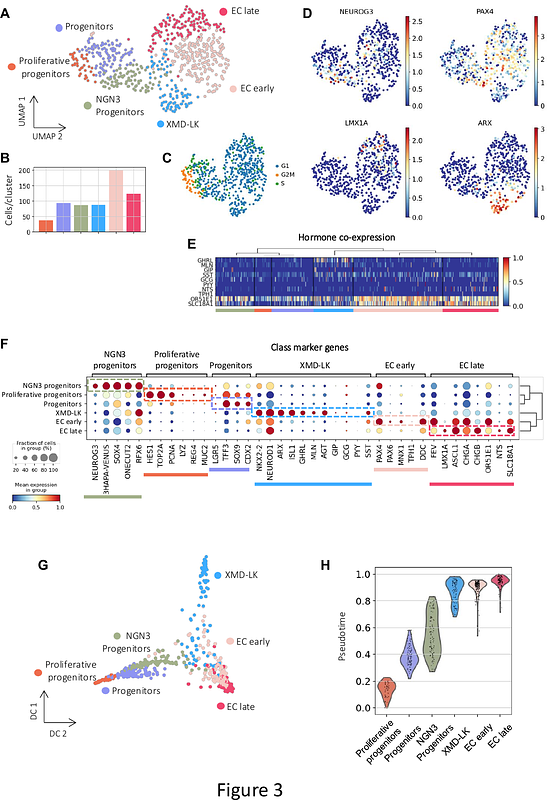Unraveling Enteroendocrine Cell lineage dynamics and associated gene regulatory networks during intestinal development

Unraveling Enteroendocrine Cell lineage dynamics and associated gene regulatory networks during intestinal development
Jimenez, S.; Blot, F.; Meunier, A.; Schreiber, V.; Giethlen, C.; Ghimire, S.; Mahe, M.; Molina, N.; De Arcangelis, A.; Gradwohl, G.
AbstractEnteroendocrine cells (EECs) are rare intestinal epithelial cells producing multiple hormones that regulate essential aspects of digestion and energy. EEC subtypes, their hormone repertoire and differentiation mechanisms from intestinal stem cells have been characterized in the adult intestine. However, although EECs need to be functional from birth, as their absence causes severe intestinal malabsorption in newborns, the mechanisms underlying EEC subtype specification during development are largely unknown. We used mouse embryos, human pluripotent stem cell derived intestinal organoid models and single-cell transcriptomics to characterize EEC lineages and dynamics during development. Our findings demonstrate that in both mice and humans, the majority of EECs are specified during development through similar differentiation trajectories as observed in the adult intestine. This suggests that EEC subtypes specification occurs independently of fully organized crypt-villus structures and stimulation by diet or microbiota. However, the emergence of certain EEC subtypes depends on tissue maturation. Finally, our integrative approach infers lineage-specific regulators dynamically, identifying new candidates controlling EEC differentiation in the developing human gut.